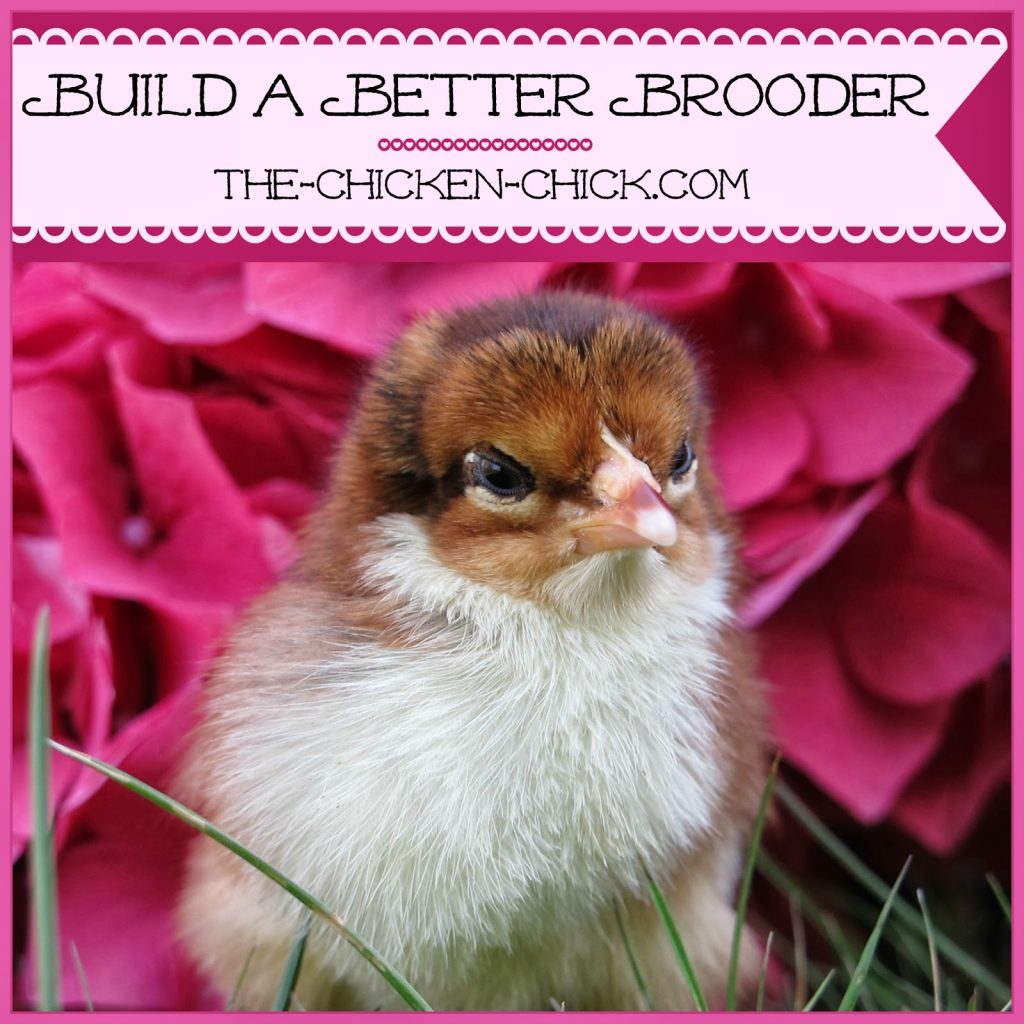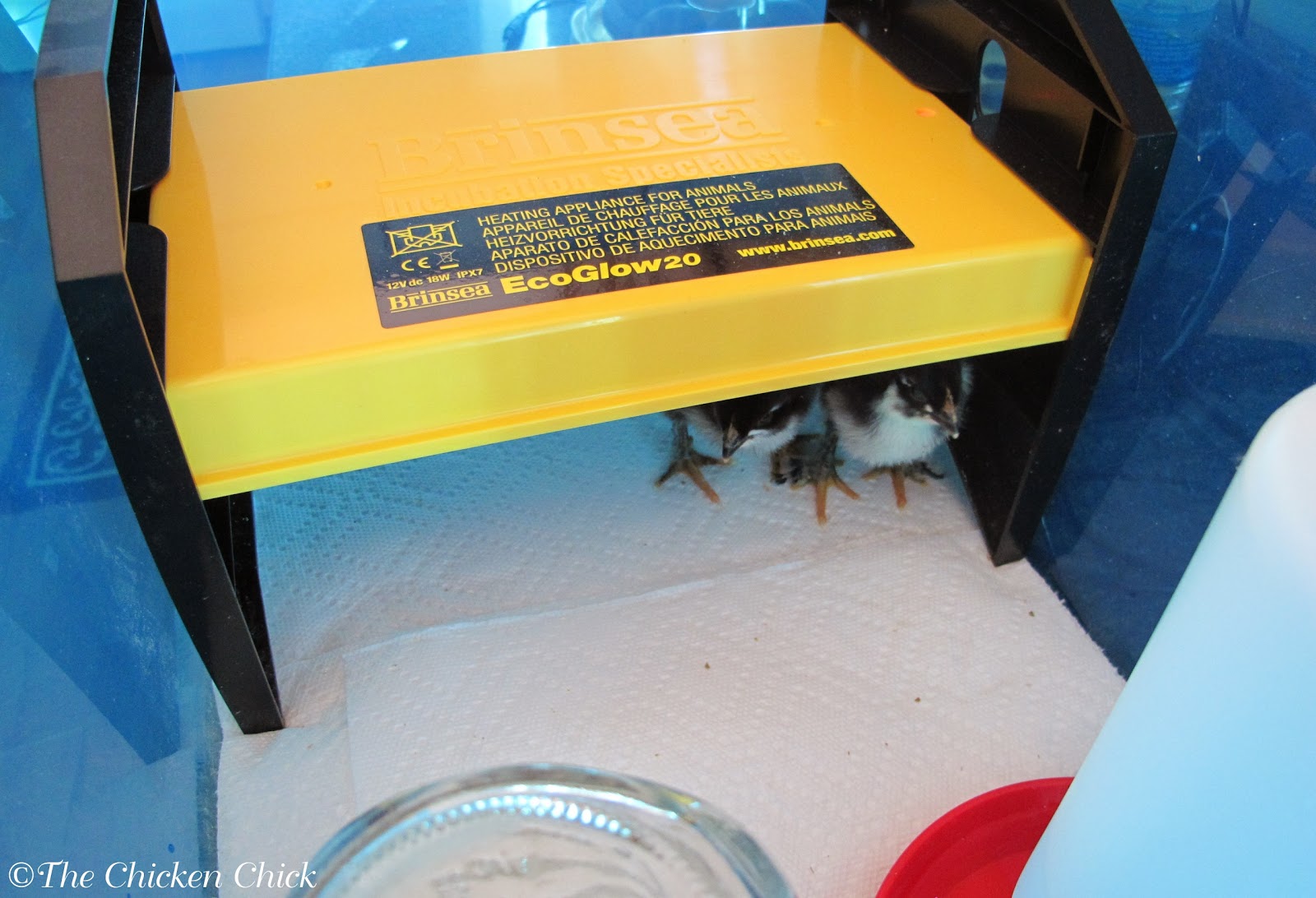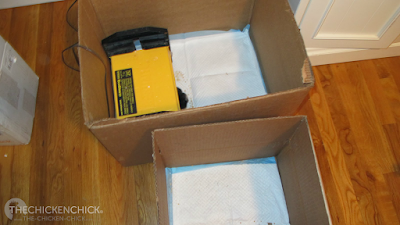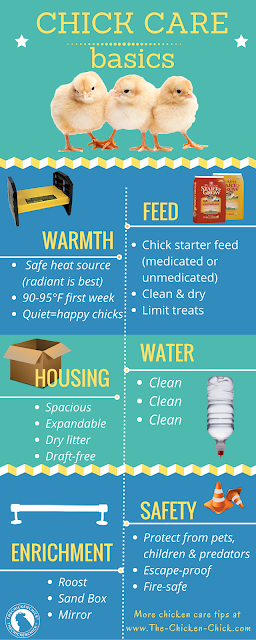It’s amazing how quickly baby chicks grow and it can be a challenge to house them in a brooder that is large enough for them from week to week. I have used a number of different brooder types over the years from cardboard boxes to playpens, rabbit hutches and plastic tubs.
Choosing the biggest brooder possible for the age of the chick is important as overcrowding causes behavioral and health problems that are easier to avoid than to remedy. Many, creative options can work for a brooder- the set-up is limited only by the imagination. Having brooded countless batches of baby chicks, my strong preference for a housing unit is a puppy playpen, followed by the humble cardboard box.
Elements of a Highly Functional Brooder
1. Spacious (provides adequate elbow room for each occupant)
2. Safe (no fire hazard, keeps chicks inside & unwanted guests out)
3. Easy to move
4. Easy to clean or discard (eco-friendly is a bonus)
5. Inexpensive is always nice.
Plan on 2 square feet per chick in the brooder, which may seem excessive initially, but chicks grow at an astonishing rate and it is important to have adequate space available to them in order to avoid problems that result from overcrowding such as picking and cannibalism.
Rabbit cage brooder with horse stall pellets, available inexpensively online and in feed storesCardboard brooder condo with EcoGlow Brooder for warmth
I generally brood chicks in stages, beginning inside the house, then moving to the basement or garage, then finally into a wire dog kennel inside the coop just prior to integrating the birds into the main flock. Cardboard boxes work best for me because they can be added onto as chicks grow, are easy to move, can be recycled, are free and because I use a Brinsea EcoGlow for warmth, they are infinitely safer than traditional heat lamps.
THE BETTER BROODER
Here’s how I make a chicken brooder condo that will grow with my chicks:
I start with the largest boxes available at the time and line them with puppy training pads, which water-proofs the bottom of the box.
I cut out two identically sized “windows” between the boxes.
Duct tape the boxes together at the four edges of the windows. This holds the boxes together and prevents litter from falling through the gap.
For a billion and one reasons, I use an EcoGlow Brooder, not the least of which is because heat lamps are supremely dangerous even when used properly. More about heat lamps versus this radiant heating unit here.
This puppy playpen makes a fantastic brooder for baby chicks. In this photo, 6 of my adult chickens traveled with me to film a television show, but the playpen is an excellent brooder space for chicks too. The top zips closed to keep flying peeps inside. I do not recommend using a heat lamp at all, but especially not with a cardboard box or canvas playpen.
When the chicks are big enough to fly out of the brooder, I simply lay a piece of hardware cloth on the top of the boxes to contain them. In homes with cats or dogs, the hardware cloth should be installed initially to keep them out of the brooder.
I also use a poultry nipple drinker to keep chicks from spilling water in the brooder, which can lead to coccidiosis, a deadly disease, which is the #1 cause of death in brooder chicks.
Kathy Shea Mormino
Affectionately known internationally as The Chicken Chick®, Kathy Shea Mormino shares a fun-loving, informative style to raising backyard chickens. …Read on


shop my SPONSORS
It’s amazing how quickly baby chicks grow and it can be a challenge to house them in a brooder that is large enough for them from week to week. I have used a number of different brooder types over the years from cardboard boxes to playpens, rabbit hutches and plastic tubs.
Choosing the biggest brooder possible for the age of the chick is important as overcrowding causes behavioral and health problems that are easier to avoid than to remedy. Many, creative options can work for a brooder- the set-up is limited only by the imagination. Having brooded countless batches of baby chicks, my strong preference for a housing unit is a puppy playpen, followed by the humble cardboard box.
Elements of a Highly Functional Brooder
1. Spacious (provides adequate elbow room for each occupant)
2. Safe (no fire hazard, keeps chicks inside & unwanted guests out)
3. Easy to move
4. Easy to clean or discard (eco-friendly is a bonus)
5. Inexpensive is always nice.
Plan on 2 square feet per chick in the brooder, which may seem excessive initially, but chicks grow at an astonishing rate and it is important to have adequate space available to them in order to avoid problems that result from overcrowding such as picking and cannibalism.
Rabbit cage brooder with horse stall pellets, available inexpensively online and in feed storesCardboard brooder condo with EcoGlow Brooder for warmth
I generally brood chicks in stages, beginning inside the house, then moving to the basement or garage, then finally into a wire dog kennel inside the coop just prior to integrating the birds into the main flock. Cardboard boxes work best for me because they can be added onto as chicks grow, are easy to move, can be recycled, are free and because I use a Brinsea EcoGlow for warmth, they are infinitely safer than traditional heat lamps.
THE BETTER BROODER
Here’s how I make a chicken brooder condo that will grow with my chicks:
I start with the largest boxes available at the time and line them with puppy training pads, which water-proofs the bottom of the box.
I cut out two identically sized “windows” between the boxes.
Duct tape the boxes together at the four edges of the windows. This holds the boxes together and prevents litter from falling through the gap.
For a billion and one reasons, I use an EcoGlow Brooder, not the least of which is because heat lamps are supremely dangerous even when used properly. More about heat lamps versus this radiant heating unit here.
This puppy playpen makes a fantastic brooder for baby chicks. In this photo, 6 of my adult chickens traveled with me to film a television show, but the playpen is an excellent brooder space for chicks too. The top zips closed to keep flying peeps inside. I do not recommend using a heat lamp at all, but especially not with a cardboard box or canvas playpen.
When the chicks are big enough to fly out of the brooder, I simply lay a piece of hardware cloth on the top of the boxes to contain them. In homes with cats or dogs, the hardware cloth should be installed initially to keep them out of the brooder.
I also use a poultry nipple drinker to keep chicks from spilling water in the brooder, which can lead to coccidiosis, a deadly disease, which is the #1 cause of death in brooder chicks.































Brilliant article, my dad built me a custom brooder that is the size of a x large dog crate. It is really nice to use.
No, it’s really not warm enough for that purpose.
Question (or idea) – instead of the eco glow (which looks awesome, but trying to save a little $$) or heat lamp, do you think using a water tin water warmer could work? They could snuggle up against it to keep warm. I only have a heat lamp and would really love to NOT use it. Thoughts? Thank you!!
I had chicks in the house last spring. they were so fun and cute, but really STINKY. I would rather have them be hatched by mom and kept out in the hen house. It’s still cold here so I’d have to have some heat source, so I’m sort of nervous about trying it. Why don’t you keep your chicks in the hen house?
I have a chick my little cousins were playing with the babies and a brick accidentally feel on his leg so what should I do?